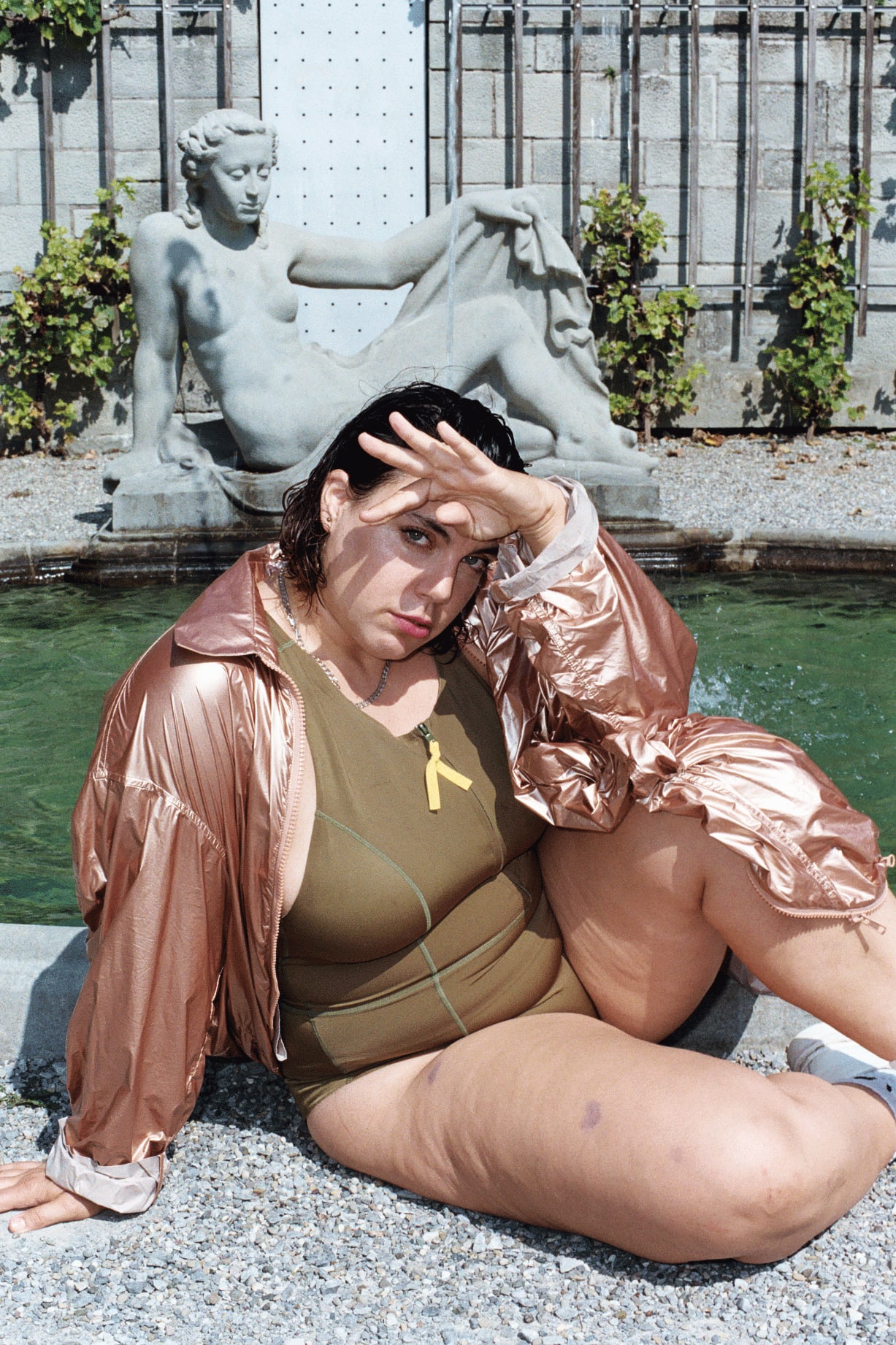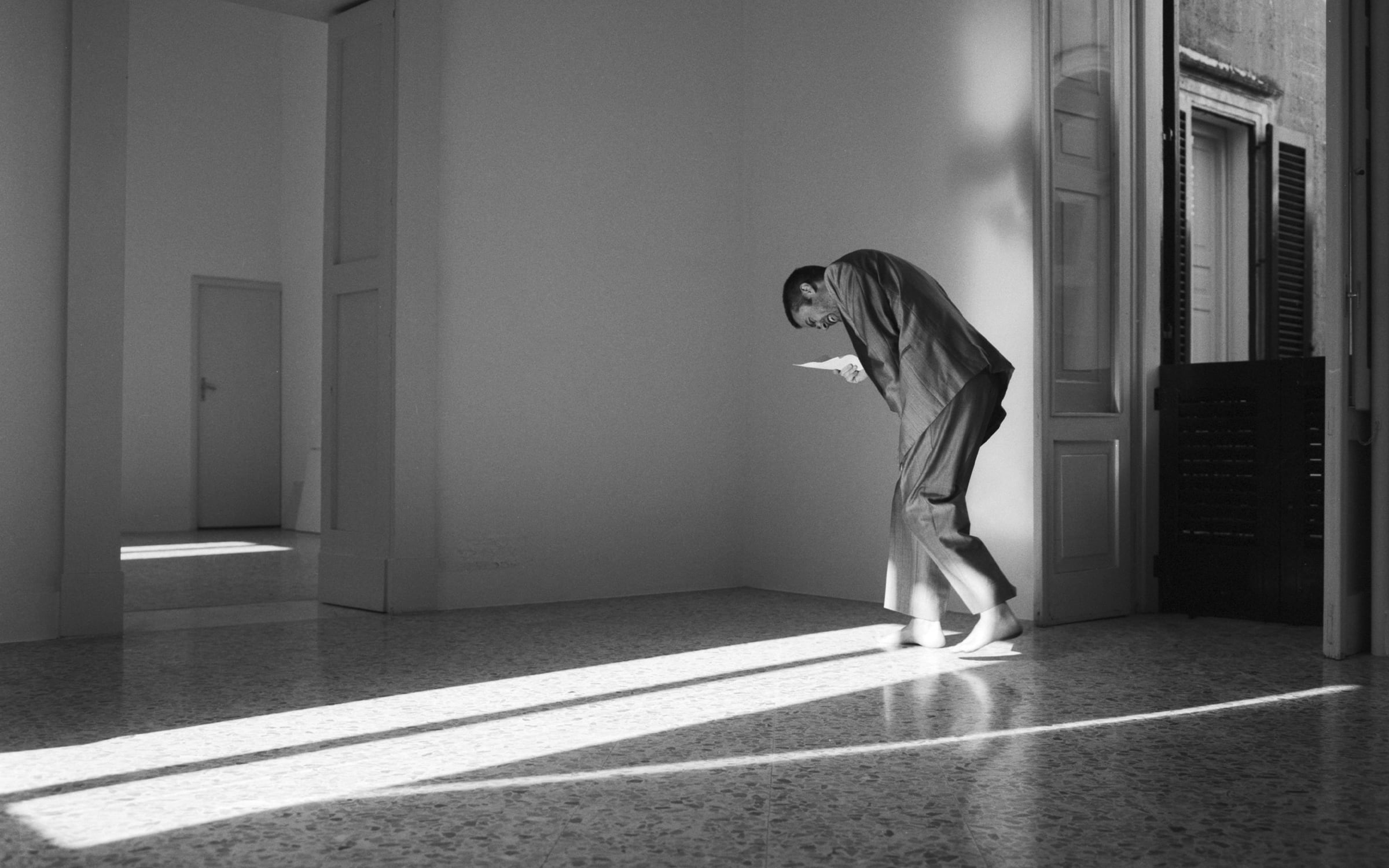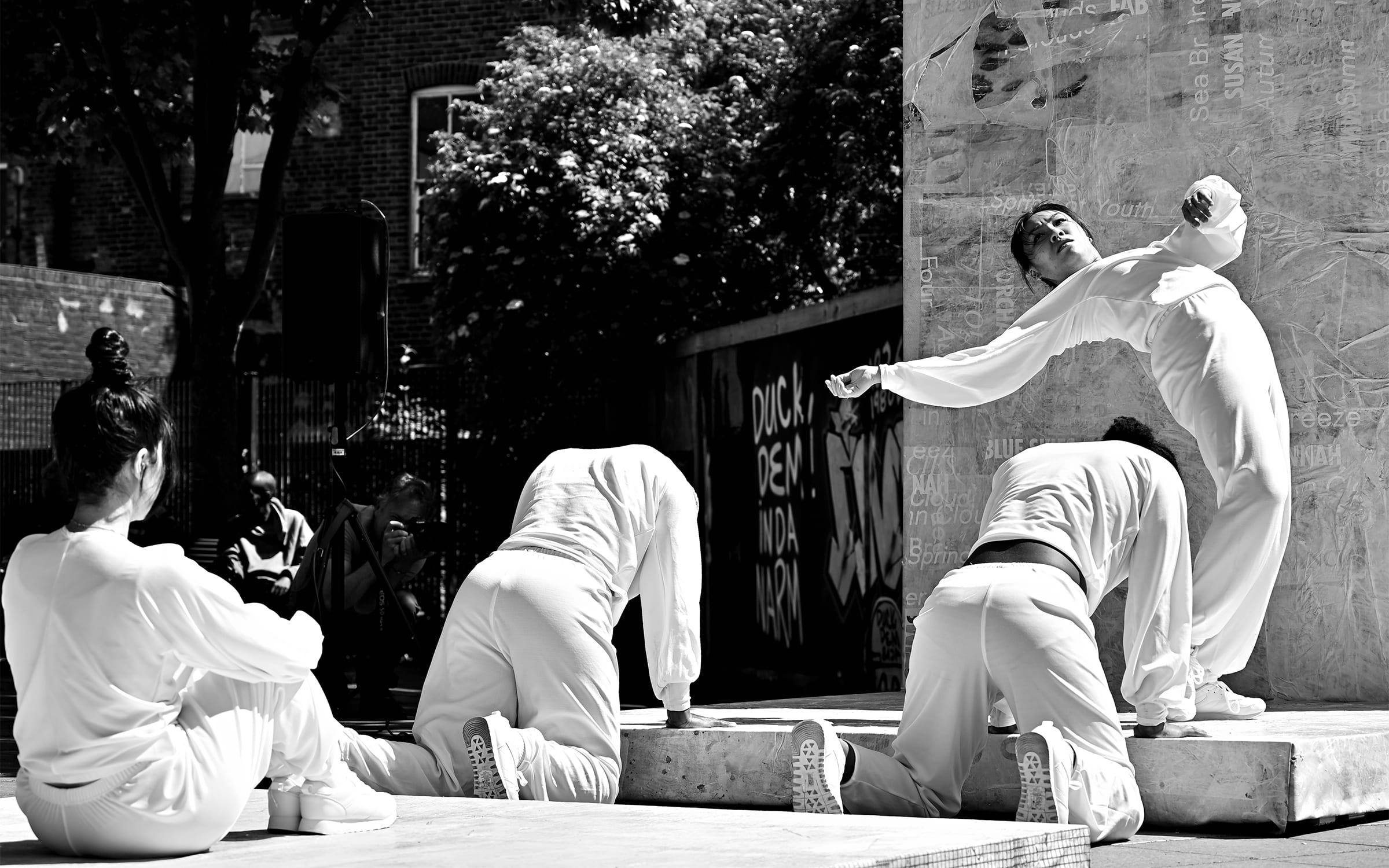Vegetation and objects meet and unite in the artist’s garden
‘The Move festival explores the contemporary body as an object of thought, traversed by a flow of questions about gender, sexuality, and post-colonialism,’ says Caroline Ferreira, artistic director of a festival that has broken new ground for Centre Pompidou programs.
Since its launch in 2017, the Move festival has proposed a vision of body-politics as a battlefield where situated artistic practices are born. Past editions have been devoted to the ‘amateur’ body, opening up a reflection on ageism and ableism; the ‘critical’ body, examining modes of resistance to domination; and other core themes including body memory, vulnerability, care, intimacy, and the role of communities.

‘Move doesn’t make a distinction between choreographers, videographers, and artists who work with performance. It’s about exploring the various modalities of producing and showcasing performance – inhabiting spaces not traditionally devoted to dance or, conversely, encouraging artists to take their work to the stage. It’s a dynamic we also see in festivals like Performa [New York], Playground [Leuven] and Les Urbaines [Lausanne],’ says Ferreira. ‘We want to question the social choreographies of museums – their institutional codes, movements, and customs. And we want to offer a space for reflection that links contemporary bodies to social questions about gender and post-colonialism. These conversations were already prevalent in London when I was cultural attaché of the French Embassy, but there has been a growing intellectual and artistic excitement about them here for the past few years.’
The 2022 Move festival is devoted to the ‘collective body’ in a post-pandemic world, where the very possibility of collective bodies is in crisis. The current context underlines the significance of human contact and shows how this mode of connection has been transformed. ‘Faced with neo-liberal individualism, our global crisis has reminded us of the importance of collective action and the crucial role of community spaces that are perceived as “safe spaces,”’ says Ferreira. Seeking to ward off collective panic about contamination, the artist Lukáš Hofmann summons bodily fluids, breath, and Vaseline in a performance film that conceives of skin as a protective, yet porous, membrane. His forms are just as much drawn from medieval thought as from the structure of opera. Marie Tučková, inspired by ecofeminism, establishes a parallel between the colonization of bodies and the colonization of life: drawing on the role of song in communities of women, she imagines a ‘polyphonic uterus’ and proposes alternative forms of relating to and fusing with the non-human. Daniela and Linda Dostálková, for their part, rethink our dominant relation to the animal kingdom, extending the issue of social inequality to other species. While artist duo Julia Gryboś & Barbora Zentková, reflecting on efficiency imperatives and collective fatigue, present a healing space that unites weaving and tea leaves. The inclusion of this group of Czech artists is the result of an exchange with the National Gallery in Prague, which welcomed the Move festival earlier this year.
In a critique of coercive optimal-performance strategies, Cally Spooner examines downtime and repetition, associating the rise of workout videos with the dominance of neoliberalism, in a performance that combines living bodies and cadaver-like avatars. Teresa Vittucci, for her part, turns to her own body to examine the iconic actors of the German filmmaker Ulrike Ottinger’s feminist films. At the Church of St. Eustache, Michael Dean, accompanied by his eldest son, explores the human voice pushed to breaking point in an intense performance that ranges from rage to sorrow. The corporality of language is also at the heart of the work of Mandy El-Sayegh, whose performance unfurls from surfaces she calls ‘painted skins.’


The French scene will be represented by two artists: Tarek Lakhrissi, whose performance invokes the protective role of shadows and the figure of the monster, historically associated with queer and racialized bodies; and Mona Varichon, who plays with contemporary image-regimes (web-series, vlogs, and social media) to speak of the formation of artistic communities, inextricably linked to the birth of political and emotional relationships. Rather than adopt current media codes, this new generation of artists has a keen understanding of how to act as its own media, particularly within the field of performance. Critical reflection often succumbs to anxious melancholy. Esben Weile Kjær, however, decodes event-economies and recodifies forms of collective performances (raves, protests, press conferences, ballets) to bring to the Move festival a fire show evoking the erotic fetishization of the masculine codes of firefighters. All of these artists strategically operate at the heart of social constructs that forge our subjectivity; but this awareness does not the exclude the search for collective spaces of liberation – or the possibility of other desires.
Pedro Morais is an art critic, curator, and teacher of contemporary art at the Nantes Saint-Nazaire School of Fine Arts.
Move 2022
‘Culture Clubs – Corps collectifs’
October 6 – 23, 2022
Centre Pompidou, Paris
English translation: Peter Behrman de Sinety
Caption for full-bleed images: 1. Marie Tučková in collaboration with Raffia Li, Iga Świeściak, and Dorota Tučková, The Polyphonic Womb, 2021. Videostill. Courtesy of the artist. 2. Marie Tučková in collaboration with Raffia Li, Iga Świeściak, and Dorota Tučková, The Polyphonic Womb, 2021. Videostill. Courtesy of the artist. 3. Esben Weile Kjær, BURN!, 2019. Performance. Courtesy of the artist.


